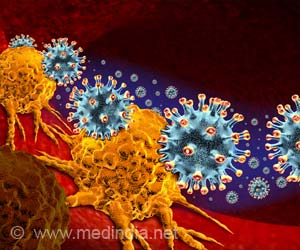Now that migration of EMT cancer cells is understood, the researchers hope to use the same device for preliminary testing of drugs aimed at inhibiting that migration.

To get this new view of how cancer cells move, the researchers borrowed microelectronics processing techniques to pattern miniaturized features on silicon wafers, which were then replicated in a rubber-like plastic called PDMS. The device consists of a small plate, about a half-millimeter square, covered in an array of microscopic pillars. The pillars, each about 10 micrometers in diameter and spaced about 10 micrometers apart, leave just enough space for the cells to weave their way through. Using microscopes and time-lapse photography, the researchers can watch cells as they travel across the plate.
"It's basically an obstacle course for cells," Wong said. "We can track individual cells, and because the size and spacing of these pillars is highly controlled, we can start to do statistical analysis and categorize these cells based on how they move."
For their experiments, the researchers started with a line of benign cancer cells that were epithelial, as identified by specific proteins they express. They then applied a chemical that induced the cells to become malignant and mesenchymal. The transition was confirmed by looking for proteins associated with the mesenchymal cell type. Once all the cells had converted, they were set free on the obstacle course.
The study showed that about 84 percent of the cells stayed together and slowly advanced across the plate. The other 16 percent sped off the front and quickly made it all the way across the device. To the researchers' surprise, they found that the cells that stayed with the group started to once again express the epithelial proteins, indicating that they had reverted back to the epithelial cell type.
"That was a remarkable result," Wong said. "Based on these results, an interesting therapeutic strategy might be to develop drugs that downgrade mesenchymal sports cars back to epithelial economy models in order to keep them stuck in traffic, rather than aggressively invading surrounding tissues."
Advertisement
"We envision that this technology will be widely applicable for preclinical testing of anti-migration drugs against many different cancer cell lines or patient samples," Wong said.
Advertisement










